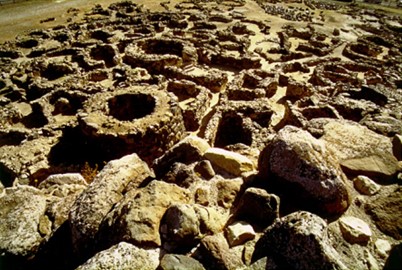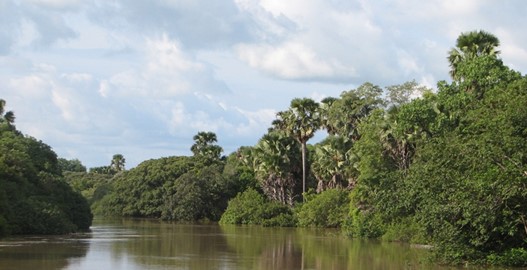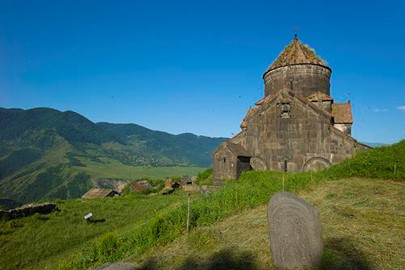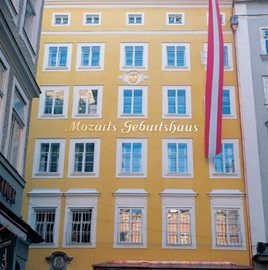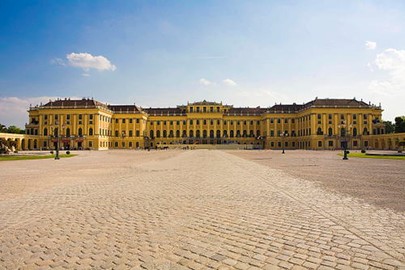search
Su Nuraxi di Barumini
Su Nuraxi di Barumini, a UNESCO World Heritage site in Italy, is a striking example of a Bronze Age nuraghe, a unique type of stone tower built by the Nuragic civilization. This well-preserved complex features a central conical tower surrounded by smaller structures and a village, showcasing ancient engineering and defensive architecture. Recognized for its historical and archaeological value, it offers insight into the prehistoric cultures of the Mediterranean.
Residences of the Royal House of Savoy
The Residences of the Royal House of Savoy, a UNESCO World Heritage site in Italy, comprise an ensemble of elegant palaces and hunting lodges built by the Savoy dynasty between the 16th and 18th centuries. This collection highlights Baroque architecture and sophisticated landscape design, reflecting the power and cultural influence of the ruling family. Notable examples include the Palazzo Reale and the Palazzina di Stupinigi, showcasing royal grandeur and artistic heritage.
Lake Turkana
Lake Turkana, a UNESCO World Heritage site in Kenya, is a striking desert lake renowned for its unique jade-green waters and rich biodiversity. Often called the 'Cradle of Mankind,' it hosts significant archaeological sites with fossils and artifacts that trace early human evolution. The surrounding harsh volcanic landscape, coupled with its role as a vital habitat for migratory birds and rare species, underscores its global scientific and ecological value.
Mount Kenya
Mount Kenya, a UNESCO World Heritage site in Kenya, is a striking volcanic peak renowned for its rich biodiversity and dramatic landscapes. It features rugged glaciers, alpine meadows, and dense forests that support a variety of unique wildlife, including rare species like the Mount Kenya leopard. This natural wonder also holds cultural significance for local communities, who regard it as a sacred site. Its pristine ecosystems and geological beauty make it a global treasure.
Riga
The Historic Centre of Riga, a UNESCO World Heritage site in Latvia, exemplifies a well-preserved medieval urban landscape blended with Art Nouveau architecture. This vibrant cultural hub features cobblestone streets, historic churches, and elegant buildings that reflect its past as a key trading center in Northern Europe. Recognized for its architectural diversity and historical significance, it showcases centuries of artistic and urban development.
Hospicio Cabañas
Hospicio Cabañas, a UNESCO World Heritage site in Mexico, is a historic complex renowned for its architectural beauty and cultural significance. Founded in the late 18th century as a hospital, orphanage, and almshouse by Bishop Juan Cruz Ruiz de Cabañas, it features a neoclassical design by architect Manuel Tolsá. The site is celebrated for its stunning murals by José Clemente Orozco, including the masterpiece 'The Man of Fire,' which adorn its chapel. Today, it serves as a cultural center, showcasing art a... Read More
Medina of Tétouan
The Medina of Tétouan, a UNESCO World Heritage site in Morocco, is a well-preserved historic city reflecting a blend of Andalusian and Moroccan cultures. Its narrow, winding streets are lined with whitewashed buildings, ornate arches, and bustling souks, showcasing traditional architecture and vibrant local life. Established as a key trading hub centuries ago, it retains its unique character through intricate tilework, ancient walls, and a rich multicultural heritage. This fortified medina stands as a testa... Read More
Volubilis
Volubilis, a UNESCO World Heritage site in Morocco, is an exceptionally well-preserved ancient Roman city that flourished between the 1st and 4th centuries AD. Originally a Berber settlement, it became a thriving Roman outpost known for its agricultural wealth, particularly olive oil production, and features impressive ruins including a basilica, triumphal arch, and intricate mosaics. The site offers a glimpse into Roman urban planning and daily life, with its excavated remains showcasing a blend of indigen... Read More
Lumbini
Lumbini, a UNESCO World Heritage site in Nepal, is renowned as the birthplace of Siddhartha Gautama, the founder of Buddhism, born in 563 BCE. This sacred site features the ancient Maya Devi Temple, marking the exact spot of his birth, alongside the Ashokan Pillar, erected by Emperor Ashoka in 249 BCE to commemorate his visit. The surrounding monastic zones, with ruins of stupas and monasteries, reflect its historical significance as a pilgrimage center. Today, Lumbini attracts visitors worldwide for its sp... Read More
Kinderdijk Elshout
The Mill Network at Kinderdijk-Elshout, a UNESCO World Heritage site, showcases a remarkable system of 19 well-preserved windmills dating back to the 18th century. This historic network exemplifies Dutch ingenuity in water management, using wind power to drain low-lying land and prevent flooding. The site includes traditional mills, pumping stations, and dikes, illustrating centuries-old engineering techniques still admired today. It stands as a testament to human adaptation to challenging environmental con... Read More
Willemstad
Willemstad, a UNESCO World Heritage site in Curaçao, is a vibrant Caribbean city renowned for its well-preserved colonial architecture and colorful waterfront buildings. Founded in the 17th century as a Dutch trading hub, its historic center features a unique blend of European and tropical influences, reflected in landmarks like the Queen Emma Bridge and the Mikvé Israel-Emanuel Synagogue, one of the oldest in the Americas. The city’s strategic harbor and rich cultural heritage make it a standout destinatio... Read More
Rohtas Fort
Rohtas Fort, a UNESCO World Heritage site in Pakistan, is a remarkable 16th-century fortress built by Sher Shah Suri to defend against Mughal incursions. This sprawling military complex showcases a blend of Afghan and Indian architectural styles, featuring massive walls, imposing gates, and strategic bastions designed for defense. Its historical significance lies in its role as a symbol of power and resilience, reflecting the engineering prowess of its time. Today, it stands as a well-preserved testament to... Read More
Torun
The Medieval Town of Toruń, a UNESCO World Heritage site in Poland, is renowned for its exceptionally well-preserved historic architecture. This charming town showcases an impressive collection of Gothic buildings, including brick churches, townhouses, and the iconic Toruń Cathedral, reflecting its prosperity as a major trading center during the Middle Ages. Its unique urban layout, largely unchanged since the 13th century, offers a glimpse into medieval European life, with landmarks like the Copernicus Hou... Read More
Malbork Castle
Malbork Castle, a UNESCO World Heritage site in Poland, is a striking example of medieval architecture and one of the largest brick castles in the world. Constructed in the 13th century by the Teutonic Knights, it served as their headquarters and a symbol of their power. The castle features impressive Gothic design, including fortified walls, towers, and a vast courtyard, reflecting its historical role as both a military stronghold and administrative center. Today, it stands as a well-preserved monument, of... Read More
Changdeokgung Palace
Changdeokgung Palace, a UNESCO World Heritage site in Korea, is a beautifully preserved example of Joseon Dynasty architecture, renowned for its harmonious blend with the natural landscape. Constructed in 1405 as a secondary palace, it became the primary royal residence after the destruction of Gyeongbokgung. The palace features elegant structures like Injeongjeon (the main hall) and Seonjeongjeon (the king’s office), alongside the serene Huwon (Secret Garden), showcasing traditional Korean design and royal... Read More
Hwaseong Fortress
Hwaseong Fortress, a UNESCO World Heritage site in Korea, is a remarkably preserved example of late 18th-century military architecture built during the Joseon Dynasty under King Jeongjo’s reign. Constructed between 1794 and 1796, it showcases a blend of Eastern and Western design influences, featuring defensive walls, gates, and towers engineered for both functionality and aesthetics. The fortress was originally designed to protect a new capital city and honor the king’s father, reflecting its historical an... Read More
Las Médulas
Las Médulas, a UNESCO World Heritage site in Spain, is an ancient Roman gold-mining landscape renowned for its dramatic terrain and historical significance. Formed by innovative hydraulic mining techniques, the site features rugged red cliffs, deep valleys, and a network of channels that showcase the Romans' advanced engineering skills. Abandoned after the 3rd century, it now stands as a testament to the environmental and cultural impact of Roman industry, offering visitors a glimpse into one of the largest... Read More
Yuso and Suso Monasteries
The Yuso and Suso Monasteries, recognized as a UNESCO World Heritage site, are two historic Christian monasteries renowned for their cultural and historical significance. Suso, the older of the pair, dates back to the 6th century and is celebrated as the birthplace of the written Spanish language, evidenced by early manuscripts. Yuso, established later in the 11th century and expanded over time, showcases a blend of architectural styles and houses a remarkable library of ancient texts. Together, they repres... Read More
Palau de la Música Catalana
The Palau de la Música Catalana and Hospital de Sant Pau are two UNESCO World Heritage sites in Spain, celebrated for their architectural brilliance and cultural significance. The Palau, designed by Lluís Domènech i Montaner, is a stunning concert hall known for its intricate modernist design, featuring vibrant stained glass and ornate details. Nearby, the Hospital de Sant Pau, also by Domènech i Montaner, showcases a unique blend of functionality and artistry with its decorative pavilions and gardens. Toge... Read More
Dougga / Thugga
Dougga, also known as Thugga, is a UNESCO World Heritage site in Tunisia, renowned as the best-preserved Roman small town in North Africa. Originally a Numidian settlement, it flourished under Roman and Byzantine rule, showcasing a rich blend of Libyco-Punic, Roman, and indigenous influences through its well-maintained ruins, including a theater, capitol, and mausoleum. Designated a World Heritage site in 1997, it offers a unique glimpse into ancient daily life and cultural synthesis. Its remote location ha... Read More
Maritime Greenwich
Maritime Greenwich, a UNESCO World Heritage site in the UK, is renowned for its rich naval history and architectural significance. It features the historic Royal Observatory, where the Prime Meridian defines Greenwich Mean Time, alongside elegant buildings like the Queen’s House and the Old Royal Naval College, designed by prominent architects such as Christopher Wren. This site exemplifies Britain’s maritime legacy, showcasing its contributions to navigation, science, and global exploration.
W Arly Pendjari
W-Arly-Pendjari, a UNESCO World Heritage site in Benin, Burkina Faso, and Niger, recognized in 1996 with expansions in 2017, is a vast savanna and forest complex across three countries, forming West Africa’s largest intact wilderness. Home to elephants, lions, and the last West African giraffes, its diverse ecosystems—woodlands, wetlands, and grasslands—reflect exceptional biodiversity amid a semi-arid region. This transnational site showcases the region’s natural heritage, preserved through cross-border co... Read More
Haghpat and Sanahin Monasteries
Haghpat and Sanahin Monasteries, a UNESCO World Heritage site in Armenia, recognized in 1996 and extended in 2000, are 10th- to 13th-century monastic complexes showcasing medieval Armenian architecture. Featuring domed churches, libraries, and intricate stone crosses (khachkars), they reflect a golden age of religious and scholarly life. This site highlights Armenia’s cultural heritage, preserving a testament to its spiritual and artistic legacy in a rugged landscape.
Salzburg
Salzburg, a UNESCO World Heritage site in Austria, is a historic city celebrated for its baroque architecture and rich musical heritage. Nestled against a backdrop of alpine peaks, its charming old town features ornate churches, grand palaces, and cobblestone streets. Birthplace of Mozart and the setting for 'The Sound of Music,' it blends cultural legacy with scenic beauty. This well-preserved urban gem reflects centuries of artistic and architectural achievement, making it a timeless European treasure.
Schonbrunn
The Palace and Gardens of Schönbrunn, a UNESCO World Heritage site in Austria, is a magnificent baroque ensemble celebrated for its architectural grandeur and historical significance. The opulent palace, once an imperial summer residence, features lavish interiors and sprawling gardens adorned with fountains, sculptures, and manicured hedges. Completed in the 18th century, it reflects the power and taste of the Habsburg dynasty. This iconic site blends regal elegance with landscaped beauty, offering a glimp... Read More
